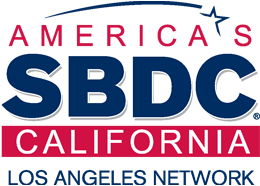Has it been years since your small business increased prices? In today’s economy, many small business owners worry that raising prices will drive cost-conscious customers away. That’s not necessarily true: The 2012 Public Affairs Pulse survey reports 68 percent of Americans would rather do business with a small, local company—even if it charges higher prices—than with a big corporation.
Here are 10 tips for raising your prices without alienating customers.
-
Start small. Customers are less likely to notice or object to small, gradual price increases (say, 5 percent). You can also add small fees for “extras” that are currently part of your regular price. For instance, if gas prices are increasing your delivery costs, consider adding a delivery surcharge.
-
Test price increases. Test the waters by raising prices on a few of your products, or on smaller, less crucial clients, before moving on to core clients or products.
-
Stay one step ahead. If your business relies on materials whose prices fluctuate frequently, such as gas for deliveries or food for a restaurant, monitor price outlooks for those items so you can adjust prices (or cut costs) accordingly.
-
Create multiple tiers. If you’re reluctant to raise prices on your core product or service, consider adding a higher-tier product or service line that offers greater quality or more services at a higher price.
-
Bundle products or services. Grouping products or services into packages can persuade customers to buy more in order to save on per-unit costs. For example, a spa could bundle treatments; an insurance company could bundle different types of coverage.
-
Give customers notice. Business-to-business companies making substantial price increases should alert customers in advance. Contact customers 60 days ahead of time to explain the increase and the reasons for it. If desired, you could offer customers the option to lock in contracts at the lower rate before prices rise.
-
Consider seasonality. If your product or service is in high demand and/or in short supply at a particular time of year, that’s typically a good time to raise prices, since customers are less likely to question the increase.
-
Use discounts and deals sparingly. Excessive use of coupons, daily deals and sales can hurt your margins and attract customers who buy based solely on price. Instead, use discounts strategically to attract new customers and reward current ones. Train your salespeople in the art of upselling so even customers lured by discounts end up spending more.
-
Educate your customers. Customers are more willing to absorb price increases if they understand what makes your products or services special. Whether it’s the locally grown, organic ingredients you use in your restaurant or the unconditional guarantee you provide for the websites you design, make sure customers know what sets your business apart.
-
Monitor results. Pricing isn’t a one-time action but an ongoing art. Use financial software such as QuickBooks to monitor your business’s cash flow, sales and profit margins. Monitor how price increases affect each of these elements, and adjust pricing as needed.
Rieva Lesonsky is founder and President of GrowBiz Media, a media and custom content company focusing on small business and entrepreneurship. Before launching her business, she was Editorial Director of Entrepreneur Magazine. Follow Rieva at Twitter.com/Rieva and visit her website SmallBizDaily.com to get the scoop on business trends and sign up for free TrendCast reports.





